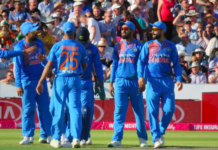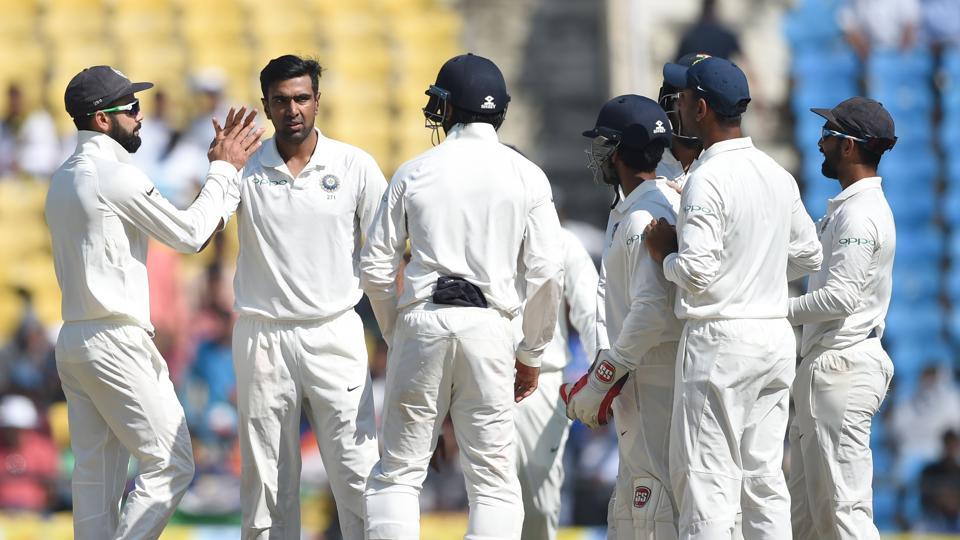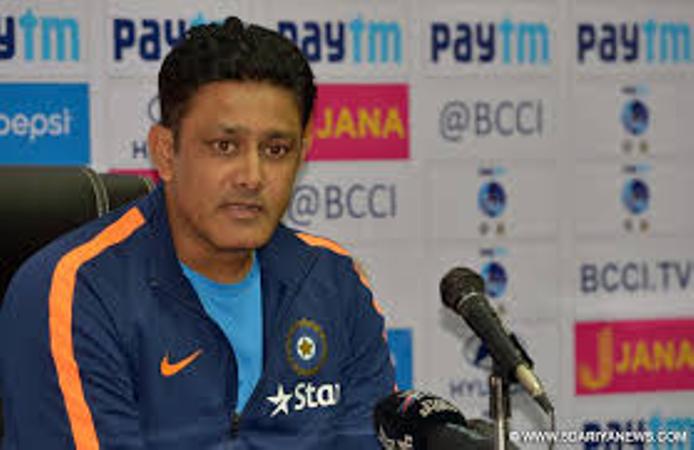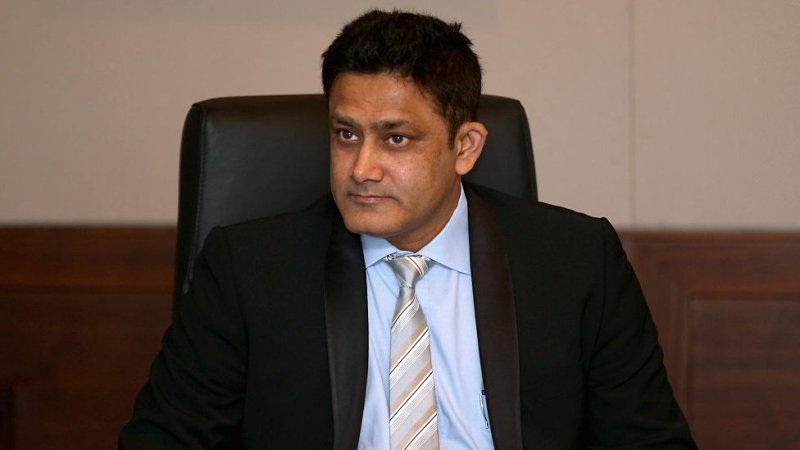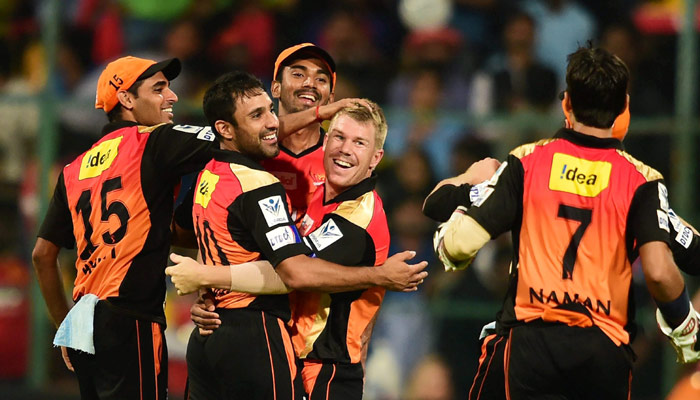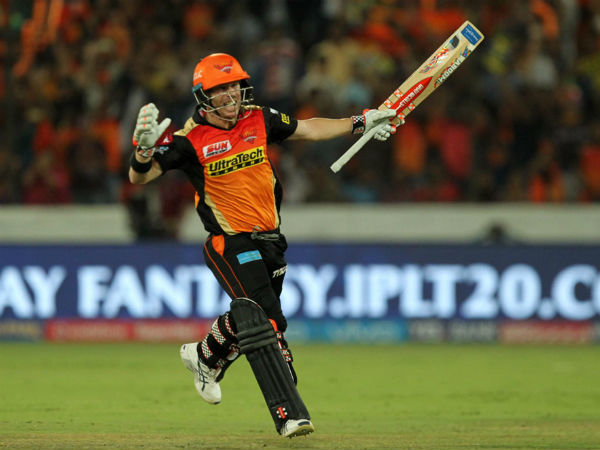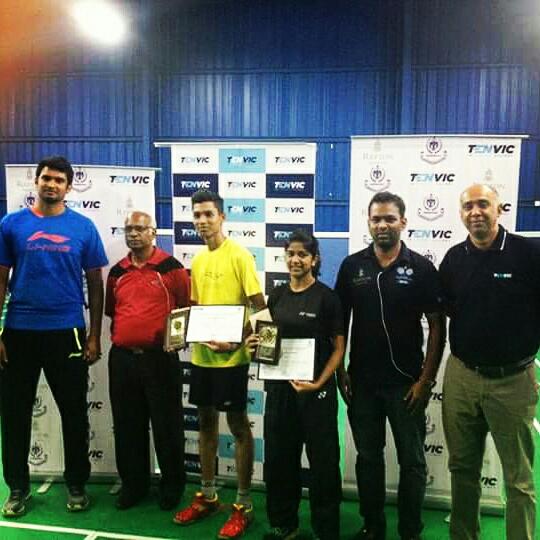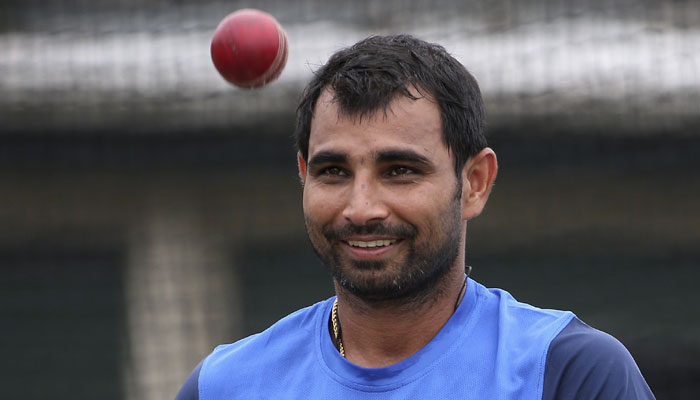Don Bradman was a phenomenon whose records would never be equalled or surpassed. Sachin Tendulkar comes nowhere near.
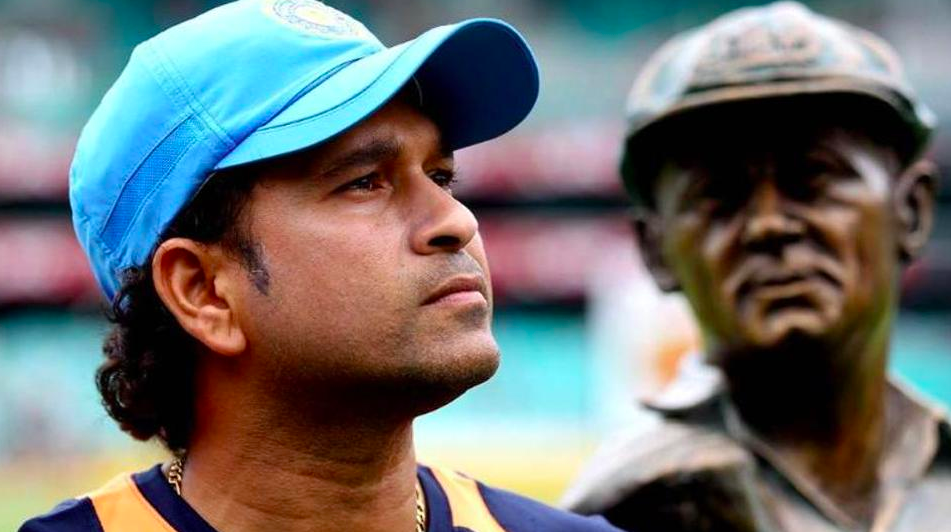 In India Cricket is a religion like Christianity, Jainism, Sikhism, Buddhism, Islam and Hinduism. But cricket, unlike the other six is a great unifier, irrespective of the differing religious affiliation of the devotees. Millions of devotees are unanimous in their opinion that Sachin Tendulkar, India’s greatest batsman, is the God of cricket, and is greater than even Don Bradman.
In India Cricket is a religion like Christianity, Jainism, Sikhism, Buddhism, Islam and Hinduism. But cricket, unlike the other six is a great unifier, irrespective of the differing religious affiliation of the devotees. Millions of devotees are unanimous in their opinion that Sachin Tendulkar, India’s greatest batsman, is the God of cricket, and is greater than even Don Bradman.
These adoring fans are also being driven into a state of exaggerated and uncontrolled frenzy by hundreds of self-proclaimed “authorities on cricket” — officials of the various cricket administrative bodies, commentators, some batsmen of the past as well as today, cricket journalists, captains of industry, and even movie actors. One must of course recognise the fact that Tendulkar is one of the greatest batsmen of all time but to regard him as superior to Bradman is erroneous, and baseless.
To use an idiom from mountaineering, Bradman is the summit. All others including Tendulkar are smaller peaks of varying heights, or base camps. In order to prove my thesis, I have advanced a few novel arguments below.
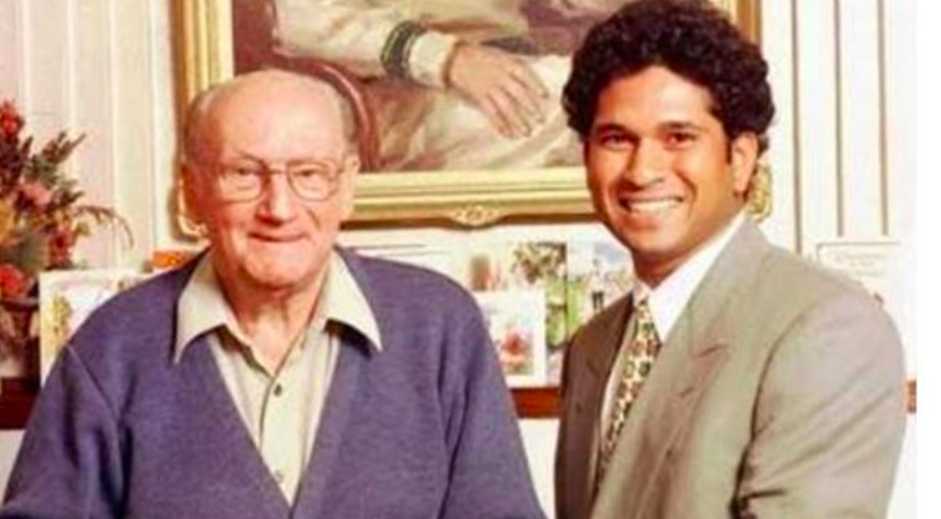
I felt that there is nothing new in just declaring that Bradman is the greatest batsman who ever lived by merely analysing the voluminous statistical data in respect of his huge scores and the records he had established. On the other hand what I propose to do is to mention those special characteristics, which really knowledgeable `Cricket Historians’ refer to as ”Bradmanesque” and which cannot be applied to any other cricketer. It is through their eyes that we must look at Bradman’s special characteristics which no other batsman possessed.
Before commencing the exercise, I wish to state that there is a misconception that batsmen of different eras cannot be compared because of the changes in the rules of the game, playing conditions, and equipment like stumps, bats, sports gear, etc. On the contrary it is possible to evaluate the relative merits of batsmen of different periods, in a scientific manner, despite the above mentioned factors.
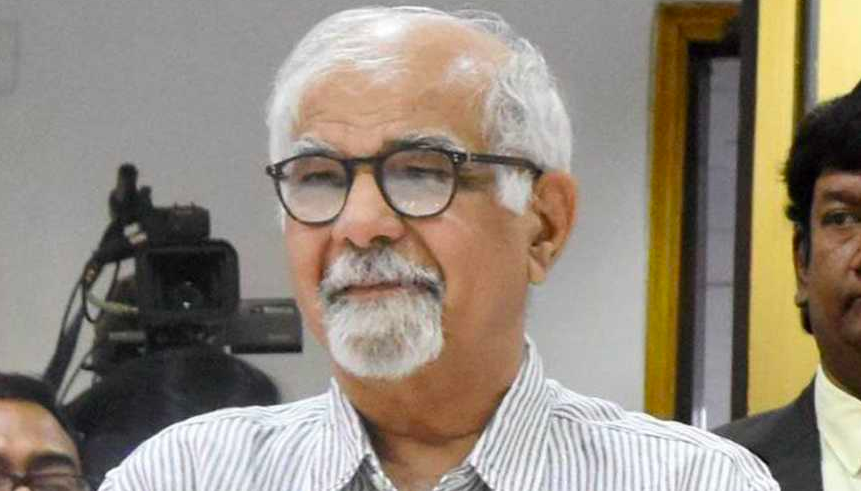
This is precisely what a cricket analyst called Surjit Bhalla did. He devised a hypothetical quantity called WIN (Weighted Index Number) calculated on the basis of a few criteria that evaluate a batsman’s score and consistency, in relation to the team’s overall performance. Various aspects of one’s batting skill in relation to quality of pitch and opposition bowling were also taken into account. “Weightage” or points were assigned to each of the attributes to calculate WIN for each batsman. Bhalla’s exercise derived sanction from the fact that the scores of all batsmen against different types of bowling and in different playing conditions were standardised by being reduced to a common denominator. It reflected the batsman’s performance accurately all things being equal. The highest possible rating mathematically was 1000.
Not surprisingly Bradman’s WIN was the highest with 958. Hobbs was 832 and Headley got 693. Tendulkar, Lara and Ponting naturally do not figure in the list prepared several decades ago, but they would get a rating near that of Hobbs. The WIN more or less follows the trend of the Test average of the batsman concerned, but one anomaly was noticed.
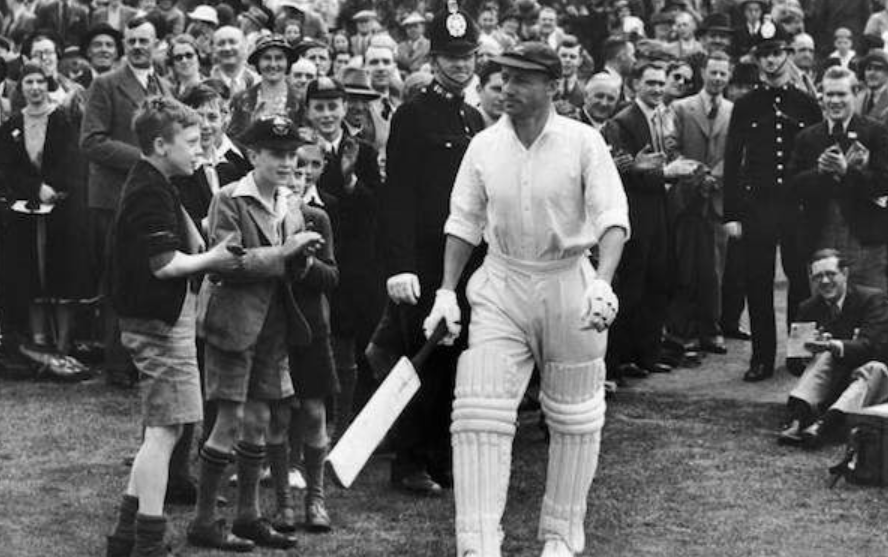
In some cases the WIN was found to be less than the Test average though in some cases a person with an average, of 40.79 (Faulkner) got a WIN of 715 which is higher than the WIN of 666 of Hammond whose average is 58.46. As stated above only Don Bradman, with the highest average of 99.94, gets the highest WIN of 958! What was more, no juggling of any parameter i.e. batting, fielding bowling or pitch conditions had any impact on Bradman’s WIN.
Though the true measure of Bradman’s greatness is undoubtedly his batting Average of 99.94 which is 36 runs higher than that of Steve Smith. the man with the second highest figure of 63. 75, it can also be appreciated from the following incidents and real anecdotes in respect of Bradman’s batting career. When India’s cricket legend Sunil Gavaskar, returned to the Pavilion after becoming the highest Test scorer of all time, he shrugged and remarked that it was “only an achievement, not a record. The record will only be broken when somebody scores 30 centuries in 52 Tests”. Gavaskar, who was obviously referring to Bradman, had played 166 innings compared to Bradman’s 79!.Those who happened to listen to his observation got the point! One must appreciate Sunny’s magnanimity.
In the third Test of the 1930 series against England at Headingley (Leeds), Bradman scored 334, what was then the highest in Test Cricket. The singularity of this score lay in the fact that he scored the first century before lunch, a double century before tea and a triple century before stumps were drawn – i.e. 309 runs in a day against a combined pace attack of Larwood, Bowes and Tate. The next day Bradman got out after scoring 334 runs. In that innings Larwood did not take a single wicket despite having given away more than 100 runs. In the series Bradman scored an aggregate of 974 runs, a figure that will never be equalled .
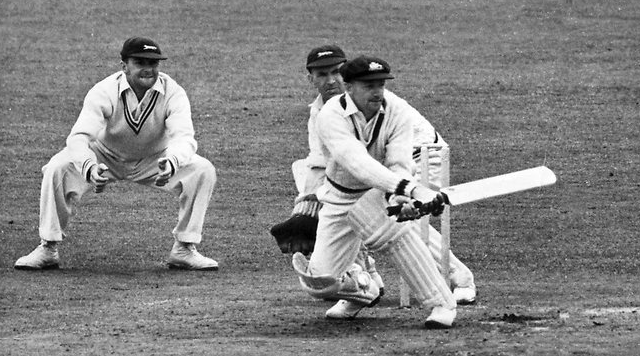
Bradman played the next series in England 4 years later. In the fourth Test at Headingley (Leeds), England were all out for 200. Bradman, who was listed out to play at the fifth position, was to play only the next day, as Australia had lost three wickets for 39. Sir Neville Cardus, the great Cricket historian, invited Bradman for dinner. Bradman politely declined the invitation saying he would like to sleep early as he wanted to score at least a double century the next day. Sir Neville Cardus cautioned Bradman that only in his previous match at Leeds (the one referred to above) he had scored more than 200 runs and so the law of averages was heavily loaded against him. Bradman told Neville Cardus that he did NOT believe in the law of averages. Sure enough he scored 304 runs!
Sir Neville Cardus perhaps understood the meaning of the expression “Bradmanesque” better than many others. In his book ‘Don’s Century’, Indra Vikram Singh quotes Cardus as having said:
“People say ’Oh, but he hasn’t the charm of McCabe, or the mercury of Macartney, or the dignity of Hammond: the objection is a little unintelligent, as though a lion was criticised for lacking the delicacy of the gazelle, the worrying tenacity of the terrier, and the disdainful elegance of a swan or a camel’”
Another incident is narrated by Alan Davidson who had visited the big man at his home in Adelaide. Bradman asked Davidson to see the bat with which he had scored what he regarded as his greatest innings – 254 against England.
Bradman told Davidson that during the innings he hit every ball exactly at the same spot in the middle of the bat. Davidson who must have thought that the Don was exaggerating was flabbergasted to notice a hole exactly in the centre of the bat where the ball had come into constant contact with the bat. It is precisely this kind of performance that lends credence to the popular story of the young Bradman repeatedly throwing a golf ball against an old water tank and again hitting it on the rebound unerringly with a Cricket stump, to develop accuracy of the highest order.
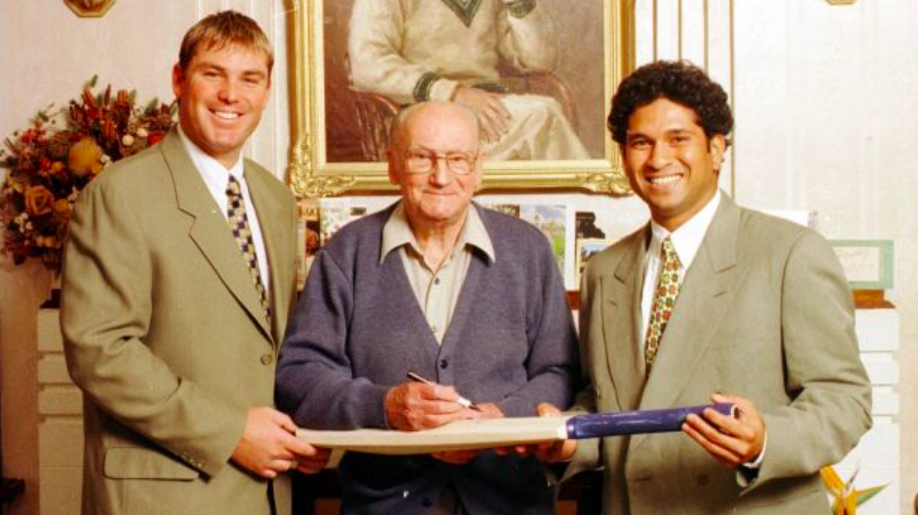
Yet another incident reflects not only Bradman’s confidence in his own incredible batting ability but also his wonderful sense of humour. India’s Sachin Tendulkar, and Australia’s Shane Warne had gone to Bradman’s residence to savour his wisdom. During the course of the conversation, Tendulkar asked the Don what his batting average (the only true index of a batsman’s greatness) would be if he played today. Bradman replied that he would average 70. Tendulkar asked him with tongue in cheek, why he would score only 70. Bradman impishly remarked “I am 90 today. 70 is not too bad for a 90-year-old.” !
A very relevant and pertinent point is the fact that only 10 batsmen have scored more centuries than the Don. They are Kallis (44 centuries in 274 innings ), Ponting (41 centuries in 287 innings, Dravid (36 centuries in 286 innings ), Gavaskar (34 centuries in 214 innings ), Waugh (32 centuries in 260 innings), Sangakkara (31 centuries in 197 innings), Jayawardene (31 centuries in 232 innings), Hayden (30 centuries in 184 innings ), Tendulkar (51 centuries in 323 innings) and Lara (34 centuries in 232 innings.
Lara incidentally holds two massive records, 400 not out in Test cricket against England, and 501 in First Class cricket, a feat not achieved by Tendulkar despite the huge number of 323 innings he has played in Test matches. As may be noticed, all the 10 batsmen mentioned above, including Tendulkar and Lara, have played an astronomically higher number of innings than Bradman (80), but their averages are below 56 runs, i.e lower than Bradman’s figure of 99.94 by a mammoth 43 runs! Hence they cannot be considered to be anywhere near the class of Bradman.
Only six batsmen, Pollock, Headley, Sutcliffe, Gilchrist, Steve Smith and Adam Voges have averages between 60 and 64, with Steve Smith averaging the highest at 63.75, but they also have scored much lesser centuries than Bradman. The Don averages 36 runs more than the next in line – Steve Smith. This huge gap in “Average” between Bradman and the next six batsmen below him can never be bridged as long as cricket is played. We can write essays and pontificate about any batsman – Sobers or Richards, Hobbs or Hammond, Gavaskar or Tendulkar, but the stark reality is the fact Bradman’s average of 99.94 is so far above of what any other batsman in Cricket history has scored, and nobody can even dream of going anywhere within 36 runs of that figure.
There are also other ways of analysing and interpreting this very same data. We would not be exaggerating if we stated that in no other sport, the No. 1 man is so far ahead of the No, 2 man as Bradman is in Cricket. Thus the distance between Federer and Nadal (Tennis), or Pele and Maradona (Football), or Tiger Woods and his nearest rival (Golf) is a mere fraction of the distance between Bradman and the next best in Cricket, as can be seen above.
Apart from that, the records of champions in other sports have just stood unbroken only for a short while – e.g. the record of Jesse Owens in Long Jump, had stood for a few years till Carl Lewis broke it. The record of Carl Lewis was bettered by Beamon. Beamon’s record was again bettered, by another athlete. It is a question of time before someone betters the latest record; similar is the case with Jack Nicklaus or Tiger Woods in Golf; the records of all these sportsmen have all stood only for a short time till they were bettered by another sportsman in their respective sport. (Even the record of Babe Ruth in Baseball which stood for decades had been bettered twice in one season). But in the 7 decades since Bradman retired, no other batsman who has played 80 Test innings or more has come within 36 runs of his colossal average of 99.94. And there is no sign of the gap ever narrowing.
It is considered fashionable to argue that players of the past shouldn’t be compared with players of today, and cricket is an entirely different game now, and so any comparison is meaningless. By this argument it is not possible to compare the records of Tilden , or Gonzales in Tennis with say Laver’s record or Federer’s. Such an argument is not valid in respect of Cricket . As a matter of fact the changes in cricket’s rules, and the improvements in quality of equipment have made the game “batsman friendly” to use a computer idiom.
These are:
Improvement in quality of bats made today.
The limitation in respect of the size of stumps have made it difficult for bowlers to get batsman out by getting them clean bowled or out with their leg before wicket (during the days of Bradman even the size of the stumps was increased and the leg-before rule broadened to the disadvantage of back-foot players. Bradman, incidentally played some of his best strokes on the back-foot also, though it was his pull which was the greatest stroke in the whole of Cricket).
Pitches today are covered so that overnight rain does not make them soggy resulting in unpredictable bouncing of the ball. In Bradman’s time, overnight rain made the ball skid and turn, unpredictably and therefore dangerously, giving the bowler an unfair advantage.
There are now restrictions on bouncing, and placement of fielders. No Jardine can set a field today to enforce anything like “Bodyline”.
The helmet, the heavy padding, and other protective gear, cover almost all vital organs, eliminating the risk of death and injury. No batsman will suffer the kind of injury that poor Oldfield or Woodfull sustained. On the other hand the Don faced Larwood, Bowes at their peak employing Bodyline and leg theory wearing only a cap made of soft cloth. Gautam Bhattacharya quotes Larwood as having said after watching Tendulkar “Ask him not to wear that Helmet. Don never wore one.”
All this is in addition to the availability of excellent medical facilities, wherever the cricketers play.
Bradman had to cover the long voyage to England by sea and travel by train within Australia, and England, whereas all players of today including Tendulkar only fly in comfort, in Jets between any two points – they are rested in luxury hotels, with nutritious food. All these factors have decisively shifted the advantage in favour of the batsman.
While on this point, I cannot avoid mentioning Tendulkar’s views on the helmet. He reportedly stated that he as well as others are wearing helmets because they are available now whereas players of the past didn’t because there were no helmets then. Therefore this charge cannot be levelled against him. Tendulkar conveniently and deliberately ignored the fact that he himself had been hit on the head several times when he had been wearing the helmet. It is anybody’s guess how many times and how many serious head injuries he must have sustained, had he played pacemen without a helmet throughout his career! Would he have been able to score so many centuries? Most definitely not! On the other hand, even Gavaskar played throughout his career without a helmet and registered very impressive scores against dangerous bowlers. No need to elaborate further.
India’s Lala Amarnath said that the Don was the only batsman who put fear into him even before he faced a ball, and added that to the Don, Test Cricket was one-day Cricket.
Some of the greatest bowlers in Cricket history are unanimous in their opinion that there was something mystical about the Don’s play. For example, Jim Laker, arguably the greatest off-spinner of all time, is of the view that it was a nerve-wracking experience to bowl to Bradman because he seemed to know intuitively where the ball was going to land. Bedser regretted not having seen the Don play at his peak but quoted England’s legendary umpire Frank Chester as having said that one had to see the Don play to believe him.
Denis Compton another great English batsman said ”if any should doubt the crushing power of his strokes, please I beg you to take the word of one who fielded on the boundary to him and watched a round red bullet repeatedly pass at unstoppable speed and placed with such precision that I had no earthly chance of getting within reach. His like will not be seen again and I count it as my privilege that I was able to study his technique and methods from the closeness of slip and gully”.
Sobers and Fingleton shared the view that Bradman could make the bowler bowl the type of ball he wanted them to bowl. So then it was practically impossible to set the field to him particularly because he could drive, pull and hook from any angle and was a relentless punisher of the loose ball. And to add to this, he treated even a marginally imperfect ball as a loose ball, with contempt, and attacked it aggressively. England’s captain Pelham Warner opined that the Don would have scored a century even in a blackout. He went on to say that the balls came out of Bradman’s willow like bullets from a machine gun.
Fingleton also said that at times it seemed as though the game of Cricket was subservient to the individual Don! Bradman’s eyes were tested to see whether they had some special quality which enabled him to judge the flight of the ball with uncanny accuracy. In actual fact his sight was below average. What perhaps was happening in the case of Bradman is that his preparation for playing a stroke started much earlier than any other batsman. This enabled him to see the flight of the ball clearly a few vital seconds earlier, from the very moment it left the fingers of the bowler and so was able to gauge its trajectory accurately. Bradman was short with a height of just 5 feet 7 inches. His hands were small. But as the great Cricket commentator John Arlott opined, Bradman’s excellent timing, footwork, and wiry wrists enabled him to impart a greater power to his strokes, than any other batsman in the history of the game.
In his book ‘Don’s Century’, Indra Vikram Singh also quotes Larwood’s remark “They said I was a killer with the ball without taking into account that Bradman with the bat was the greatest killer of all”. Do we need a more eloquent testimony to prove Bradman’s batting ability and courage?
Many Cricket Analysts feel that the Don was worth two batsmen to Australia one of whom was his next best performer, say Neil Harvey or Stan McCabe or Arthur Morris. (Incidentally Arthur Morris is quoted as having said that the Don could never understand how a man scoring 60 or 70 runs could not go on to make a century!) Woodfull was of the opinion that the Don was worth three batsmen to Australia. England’s Len Hutton went even further and was of the view that the Don was a team in himself. We, therefore, have to come to the final verdict that no other sports figure – not even Laver, Federer, Jordan, Muhammed Ali, Pele or Tiger Woods have been that far ahead of the player immediately below in rank in their respective sport as Bradman was in Cricket.
An exercise was performed by a South Australian Biochemist Charles Davis which is not widely known. He made a mathematical analysis on the basis of what mathematicians refer to as a Bell curve which compared Bradman’s average with the best of the rest in cricket. He found that Bradman’s record is so far above from the norm that we would have to wait for another million Test batsmen before someone approaching Bradman would emerge .When the bell curve is applied to other sports like high- jumping Tennis, swimming Golf and Boxing , we see that the best performers in those sports could not get anywhere near the same achievement as Bradman’s in Cricket.
About 70 years have gone by and analysts and bowlers have begun to acknowledge that the finest batsmen ever born would always fall into this “good to excellent” 40 – 60 range .Then there is Bradman way up the graph at 99.94 ! . Bradman is Everest .The next best is base camp .
Bradman himself echoed these views albeit in a slightly different manner when asked in an interview in 1996, about his opinion as to why his records had remained unchallenged. With disarming modesty tinged with faith in his own supremacy he said about other great batsmen:
“I saw much better batsmen than I was… lots of them… They just kept getting out”.
Cricket would never see another like Don Bradman. At the end of the day, every cricketer must doff his hat to this phenomenal batsman who rewrote all batting records. As Indra Vikram Singh, who is arguably the greatest authority on the Don in our country, wrote, in this book ‘Don’s Century’, we should leave the final assessment of Bradman’s genius and career to England’s Hobbs:
“He spoilt the game – he got too many runs”
Read More From the Same Writer;
- Scientists Are Sometimes Petty, Not Poets
- A Stratford upon Avon Diary
- Oregon State: Crafted by God’s Best Workforce
- A `Game Park’ For Wild Elephants in Africa, Untamed, Wild
- African Safari – An Exciting Holiday Among Animals and Wilderness
































